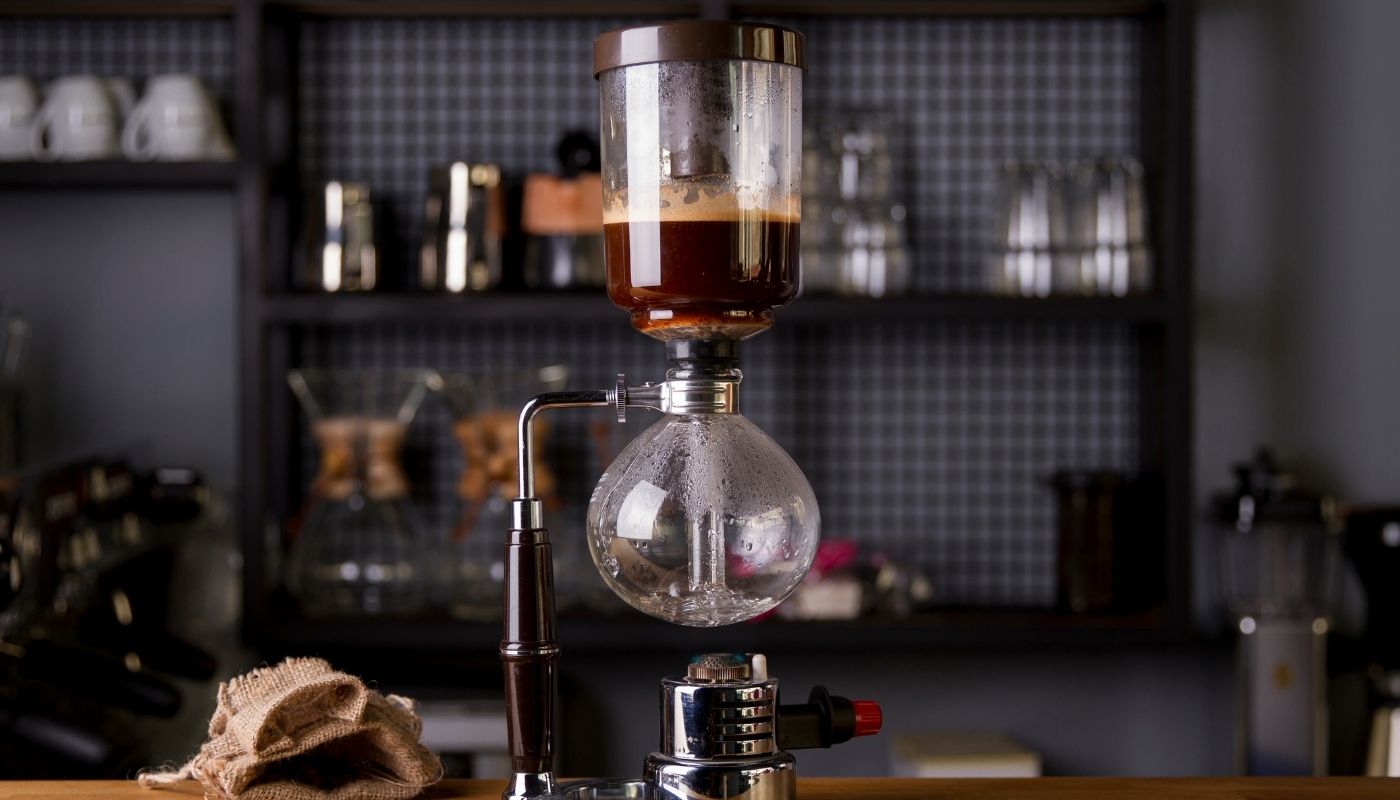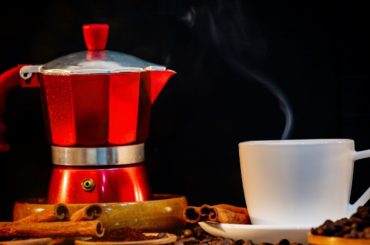Do you know what siphon coffee is, but aren’t sure how to make it at home? I’m excited for you because today we are going to talk all about the siphon brewing process and different ways that it can be done. First, let’s look at what a siphon coffee maker is. The first thing that you should know is that there are two types of these coffee makers: glass and metal. We’ll focus on the metal ones as they are more common in homes than their glass counterparts.
What Is Siphon Coffee, and How Is It Made?
A siphon coffee brewer is a small, metal pot with two chambers that are connected by an airtight tube called the ‘siphon’. It’s also sometimes called vacuum brewing or pressure-brewing because of how it works and what to expect in terms of taste compared to other methods. To use one you will need filtered water, ground coffee beans, a spoonful of sugar (optional), as well as something such as paper towels on which you can pour boiling hot water while waiting for your brew to finish.
How Does Siphoning Work?
When making coffee using this method, first put some heated water into the bottom chamber of the pot. It should be just enough to cover all of the ground coffee beans, and then use a spoonful of sugar (optional) with it if you like your coffee sweetened. Then put the top chamber back on – making sure that there is no water in it or else this will not work!
Now, wait for about four minutes as gravity pulls more heated water down from above gradually filling up both chambers until they are full, at which point bubbles start forming inside the tube connecting them together over time and eventually boiling over into other parts of the system such as an open flame below where the liquid drips through filters positioned right onto cups filled with ice cubes waiting to catch some fresh coffee.
Reasons to Try a Siphon Coffee Maker
- Siphoning with heat allows for complete saturation and no sediment or residue left behind due to gas bubbles being forced out. This leads to less acidity than typical drip-style brewers like Chemex and AeroPress because there’s a longer contact time between beans and water.
- Since it relies on vacuum pressure instead of gravity, you can use just about anything that will boil at sea level (or below) as your heat source without having to worry about boiling over. And when I say “about,” I mean anything as long it’s not plastic or silicone.
- You can brew a cup at a time, so you never have to worry about wasting beans by filling the entire pot – which is great when you’re making short cups for kids and don’t want them to get too caffeinated!
- Siphon brewing requires less water than other methods like French Press or Pour-Over because of its lower contact with heated surface area, meaning that there will be less overall dilution of flavor.
- The vacuum created in this type of brewer means that coffee stays fresher longer because oxygen isn’t able to penetrate through the heat source below where grounds are located. This also means that aromatics are preserved.
- Siphon brewers offer a more hands-on experience than other varieties of coffee makers, which is great for people who love to control every aspect of the process and experiment with all sorts of variables like grind size and water temperature.
- It’s fun! Seriously, these devices can be mesmerizing as they fill up with hot liquid or change colors when heating up from below. There’s also just something about drinking out of glassware instead of plastic cups that makes an ordinary morning feel extra special – plus it doesn’t leave any stains on your teeth either!
In conclusion, siphon coffee makers are the best way to brew a great-tasting cup of coffee.
The first step is selecting the correct filter and brewing method for your desired results, then filling up the bottom chamber with hot water – that’s it!
Once you are done brewing coffee, just let it cool down and then pour yourself a cup for an unforgettable morning experience.
Frequently Asked Question
What does siphon coffee taste like?
| Vacuum Siphon espresso is easy, full-bodied, crisp, easy, and wealthy in taste coffee thanks to the state-of-the-art coffee-making approach. forms of espresso brewing: The taste of espresso differs from espresso brewing techniques. In different phrases, exclusive espresso-making methods cause-specific tastes of coffee. |
How do you make a siphon coffee?
| Step 1: Attach the filter. The clear-out has a series that you want to pull down and attaches its clip at the bottom of the funnel. Step 2: Add water. Step 3: Warmth the water. Step 4: Degree and grind your espresso. Step 5: Attach the top. Step 6: Add your coffee to the water. Step 7: Brew. Step 8: Turn off the warmth. Step 9: The drawdown. Step 10: Revel in! |
Is siphon coffee better?
| The espresso aroma is extra intense – the nice part is, who does not love the smell of newly brewed espresso? The siphon brewing technique complements the coffee aroma more than every other brewing technique. And it's sincerely a laugh to observe within the procedure of brewing. It is so captivating to see art and technological know-how in the movement. |





